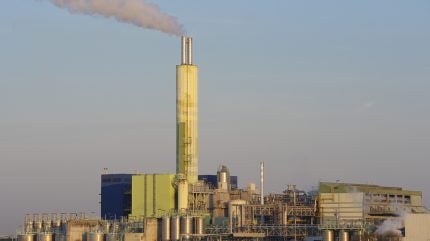
A series of independent studies have revealed high levels of toxic pollutants in the environments surrounding waste incinerators in Spain, France, and the Netherlands.
Conducted by the ToxicoWatch Foundation with support from Zero Waste Europe, the research highlights contamination from dioxins, PFAS, and heavy metals in soil, water, vegetation, and food.
The findings raise concerns about public health, environmental safety, and food contamination in areas close to Waste-to-Energy (WtE) facilities.
Severe contamination in multiple locations
The studies focused on WtE plants in Paris (France), Harlingen (Netherlands), and Zubieta (Spain), identifying widespread pollution. Dioxin concentrations in soil, moss, and backyard chicken eggs exceeded EU safety limits at all three locations.
In Paris’ Ivry-sur-Seine district, a schoolyard playground was found to contain contamination levels exceeding legal thresholds. In Harlingen, PFAS levels in water reached 138 times the Dutch legal limit for drinking water.
Meanwhile, in Zubieta, a backyard egg sample from Hernani recorded the highest dioxin concentration measured by the ToxicoWatch Foundation in over a decade.

US Tariffs are shifting - will you react or anticipate?
Don’t let policy changes catch you off guard. Stay proactive with real-time data and expert analysis.
By GlobalDataHeavy metals such as lead, mercury, and arsenic were also found in areas close to homes, parks, and schools. The presence of these hazardous substances in public spaces raises concerns about long-term exposure, particularly for vulnerable groups such as children.
Environmental and food safety concerns
In France, samples collected near the Paris incinerator showed dioxin contamination in soil and moss, including in a central park located 2.5 km from the facility. The country’s national health agency has already warned against consuming backyard chicken eggs in the region due to dioxin and PFAS contamination.
In Harlingen, PFAS levels in eggs matched those recorded near a major fluorochemical plant, despite no such industry being present nearby. The study also found that dioxin levels in soil had increased sevenfold since 2013. Heavy metal concentrations in mosses exceeded levels known to pose significant health risks.
The Zubieta incinerator, which became operational in 2020, showed significant environmental pollution. Moss samples contained dioxin levels up to 300 times higher than baseline measurements taken before the plant began operating.
The high levels of contamination in food-producing areas raise concerns over the potential impact on human health and local ecosystems.
Calls for regulatory action
In response to the findings, Zero Waste Europe has called for stricter monitoring and regulatory measures across the EU.
The organisation is advocating for real-time monitoring of persistent organic pollutant (POP) emissions from WtE facilities, particularly during non-standard operations, which are often linked to emission spikes.
Additionally, it is urging authorities to implement regular biomonitoring in affected areas, with a focus on food safety and protecting vulnerable populations.
The findings add to the ongoing debate about the sustainability and safety of waste incineration as a method of waste management.
Environmental campaigners argue that the results highlight the need for a shift toward non-burn, zero-waste solutions to reduce pollution risks and protect public health.
With mounting evidence of contamination linked to WtE facilities, researchers and environmental groups are calling for urgent action to prevent further exposure to harmful pollutants in communities across Europe.



